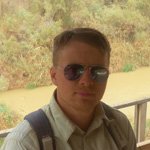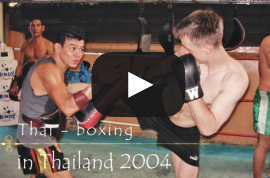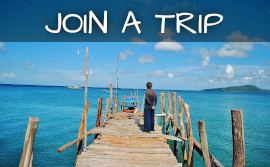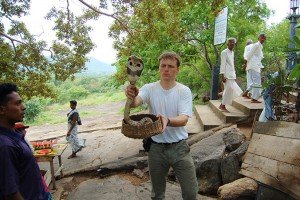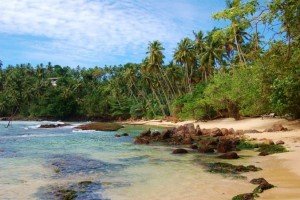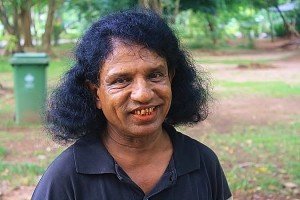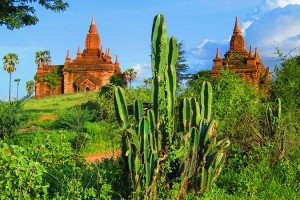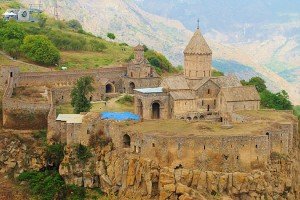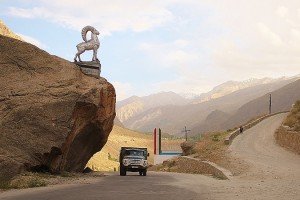Central Thailand 2011
All travel reports are translated electronically although minor improvements are sometimes made.
Central Thailand 2011 – travel report
Introduction
Central Thailand is another unforgettable adventure, usually visited on the way to the north of the country.Unfortunately this regoin of Thailand is very neglected by tourists. Usually, with very limited time, travelers choose several temples in Bangkok and several beaches. Then, if they have enough time, they go on a one-day trip organized from Bangkok and at the end of their poor knowledge about the region.

Central Thailand is primarily a history, but also with a great addition of natural charms. During the small amount of time you can admire the ancient capital of ancient Siam, learn the fate of the slaves building the bridge on the river Kwai and ride on the elephant and swim with a raft. There are other interesting things to see, such as seeing the bazaar on the river and some great waterfalls. I think that Central Thailand is certainly much closer to the culture and history of Thailand, which makes it more serious, makes it reflect and educate what this country really is. In Bangkok and on the islands it is beautiful and pleasant, but on the other hand, it is mainly a “tourist money factory”. In my experience, travelers should invest more time in this region as well, and this will certainly influence the deeper understanding of the culture of the country.
During my trip around Central Thailand I saw the following places:
- Bazaar on the river Damnoen Saduak.
- Crocodile Farm and Elephant Show in Samut Prakarn.
- Kanchanaburi (Bridge over the River Kwai, Hellfire Pass Museum, ride “Death Railway”).
- Erewan Waterfalls
- Sai Yok Noi Waterfall,, elephant riding and rafting, hot springs Hindad (Hin Dat), cave Krasae.

Bazaar on the river Damnoen Saduak
In Thailand there are many bazaars on the river, including in Bangkok and surrounding areas, but the most popular for tourists is Damnoen Saduak. The bazaar 100 km away from Bangkok is not only fun but a good image of Thai culture … and commercial. Briefly, the bazaar on the river is a narrow and overflowing canal where it is hard to concentrate on the business because there is a huge plunge, noise and plenty of goods.To save myself a headache though, and also money I took a one-day trip from Bangkok where I also saw a crocodile farm and elephant show.
After getting to the place I first went through a small bazaar on the mainland where the souvenir shoppers necessarily tried to push something. I did not have time for that, so after a while I got into a long and very narrow boat, which I sailed with great speed towards the bazaar on the river. Flowing through a narrow canal I saw people living in wooden huts built on wooden piles. They lived in this way, they were frying their food and doing laundry. The locomotives were small, narrow wooden boats attached to piles near their homes. The road to the bazaar was a very good way to get to know the local community and it was a very pleasant cruise. After about fifteen minutes of quick and interesting water ride I reached the bazaar.First I took in all my eyes and saw that the place was very loud and overflowing with people and goods. On the margins, the Thai have a great talent for housed a huge amount of stuff in a very small area, and this bazaar is a great example of this.

After a while I got on another very slow boat and among the big crowd of other boats from which everything was possible and among the shops on the shore I sailed the bazaar around in about 40 minutes.Hats, food, fruit, spices, fans, sticky rice wrapped in banana leaves as a quick snack, and all kinds of skewers with meat of unknown origin for me came from the hut standing on the stool, submerged in water.Each dish was very exotic and colorful, therefore it tempted tourists with their appearance. It was that at the bazaar on the river everyone wanted to try at least a little bit of everything. Narrow boats also looked beautiful, especially those that were full of exotic fruits. At each end of the boat were arranged fruits and in the middle you were sitting in a big hat with a small barbecue and a frying pan that tasted fruit in spices and wrapped in banana leaves. Sellers on boats have a harder task as many customers and sellers also sailed boats. It was a very spontaneous place, and the trade in Thai products flourished in spite of the great difficulties. During my cruise, for example, I wanted coconut, souvenirs, grilled meat or some concoction wrapped in banana leaf, I just had to scream or whistle, and the stall (boat with goods) came to me.Nowhere did I have to move because the goods came to me. For someone who is here for the first time it is so unusual place that unfortunately the wallet itself opens up. But not necessarily for the goods for the pleasure of the transaction itself and the way in which the sellers rushed to me in their round, pointed hats of the leaves. I bought so little but often and every time it made me happy. Well, I found time to take pictures because everyone pushed me and I had a lot of new impressions. Besides, there was also a small elephant and large tiger python ( molurus bivittatus ) with which you could take pictures. I do not approve of this kind of business, but this event first and foremost awakened my feelings because I longed for my reptiles.
When we got off the boat we made a little shopping and then we went to a crocodile farm.

Crocodile Farm and Elephant Show in Samut Prakarn
(Description of an attractive place that is also the target of torture and death for animals and a few words about the price of the White Man for entry)
Crocodile Farm is a closed resort where there are several species of crocodiles and many elephants. This is the largest crocodile farm in the world, and once again it has come to me that in Thailand everything is for the money. Generally it is a very pleasant place. There are many ponds with huge numbers of crocodiles, divided into species and sizes, exotic vegetation, playgrounds, shops, etc. Interesting was the observation of sun-drenched and crocodile-lined crocodiles. There is also a garden with orchids and many interesting crocodile models. On the other hand, it is a ruthless place of torture and the death of the animals, which appear to be a safe haven of peace. I would like to remind you that in Thailand nothing is done for pleasure, and here everything absolutely, including a smile is business. Crocodile skins are made of handbags and wallets, and in life they are used for crocodile stock where they are squeezed, turned over and thrown into the water and onto the floor. Crowds of tourists watch these shows from the stands, thinking it is fun. There is also the opinion that a crocodile farm exists for their protection but I would remind them that it is not a refuge for them but a farm. In addition, the Thai are convinced that to help protect crocodiles, some have to be killed and repackaged and handled with them.
Another interesting event was the elephant show, which consisted of several parts. One of them was a football match where elephants were beaten and scored. Another show was a show of fight against their use, referring to the times of the ancient Syam. It was important to emphasize how important elephants were performing during the entire history of Siam and then Thailand. Without going into the training process, the show itself was very enjoyable.

Before the elephant show there was also an illusionist show that sweated to conjure up something, and at the entrance you could also take a photo of a tiger who was clearly not happy because he had to posing.
The price for entering the crocodile farm is another, painful scream. The masters pay only 60 bhat but the price of White man is as much as 300 bhat. Therefore, it is worth paying a visit because the tourist companies are on different terms and it is cheaper.
Driving to Kanchanaburi
2.5h minibus for 170 bhat per person. For my 4 year old child I did not have to pay.
Kanchanaburi
Kanchanaburi is a popular destination for most travelers, which is close to the border with Burma. It is a very small town with its beautiful nature, jungle, ubiquitous palm trees and mango, papaya, snuff and sugar cane fields. The whole village is also surrounded by mountains. Unfortunately, this small town is also well known for its bridge over the Kwai River and a nearby museum, which in a very clear way tells the story of the Japanese occupation in East Asia and the history of the bridge itself. In addition there are several other memorabilia after the sad history and many tours offered outside Kanchanaburi, which offer beautiful waterfalls, elephant rides and river rafting along the Kwai River. on (I also recommend my report about Kanchanaburi from trip to Thailand in 2004 )
Upon arrival I quickly found a room. We stayed in a bungalow on the River Kwai in the Blue Star Hotel for only 150 bhat per night. Hence we were everywhere close. There were pubs and billards around and most importantly a 15 minute walk to the main facilities and about 2km to the famous museum and bridge over the river Kwai.

-In Kanchanaburi, there is a famous bridge on the Kwai River, also known from the movie with the same title. The bridge was built in 1942 by American and British prisoners of war in Japanese captivity. Given the very turbulent history of that time, it was bombarded and rebuilt many times. The Japanese planned that the bridge and the entire railway in this section where the 425km long tracks would be built in five to six years, but sacrificing about 100,000 prisoners from America, Europe and many Asian countries built the whole undertaking in just one year. I think this bridge is a great experience especially for those who have seen the film. Interestingly, the film was based on the novel of the surviving prisoner of Kanchanaburi, who was not really a prisoner. Many of the facts have been altered or dubbed, and the images for the film have not even been shot in Thailand but in Sri Lanka . Despite this, the trips on the “Bridge on the River Kwai” advertised in Bangkok and attract many tourists. When I entered this famous bridge, looking at Myanmar (Burma) and watching the river and its surroundings, I saw banana trees, exotic vegetation and people living on the river bank in wooden huts on the promenades. From the bridge there is a nice view of the jungle, singing birds and screeching parrots. The area before the bridge is, of course, a bazaar where you can buy souvenirs, fruits, coconuts and many times fried skewers, which makes it bad. I loved it, especially since it has a great historical value. The bridge itself starts with vertically aligned two moms, through which the black, iron space with tracks in the middle. This place is attractive at any time of the day or night, because when the market bustle is dark, the bridge is backlit and there is silence. (In one of the following chapters, I also described the Hellfire Pass and the “Death Railway” ride that connects the bridge over the River Kwai.)
Other interesting places are two museums located just by the river Kwai. These are the Museum of World War II and the Jeath War Mueze. There is an old rusty locomotive with a roof car that served the Japanese to carry ammunition. It was a tragic place depicting the suffering of prisoners building a bridge over the River Kwai. The museum consisted of a collection of figures, comments and newspaper quotes from that period, describing the construction of the bridge. The most striking, however, was the evidence of the torture of Japanese soldiers on captives and their custody of this murderous work. The well-built models of the people during the work well portrayed the horror of this part of history. In the museum there were many vehicles of that era, parts of the track, models of Japanese soldiers guarding the prisoners and driving motorcycles and cars. Part of the museum is located in the open air with a very good view of the bridge over the River Kwai. In the second part of the museum – Jeath was a lot of posters from the war depicting mainly pictures of key figures of those days and surviving captives after returning to Thailand to honor this place. There were, among others, photos of Hitler with Eva Braun, Goebbles, Eisenhauer, Stalin, Jiang Khai Sheka and many other characters. There was also a skeleton in the center of the room. Both museums were tragic.

JEATH stands for five countries: Japan, England, America, Australia, Thailand, Holland. On the walls of the museum there were many bas-reliefs in wartime positions, while the museum also featured interesting figures from Thai culture and the temple of Phra Thart Kwae Yai.
On the other hand, there are two Jeath War museums and one is called the same as the other to collect more money. The real Jeath War museum is a bamboo hut which is the exact replica of the prisoners’ residence. Inside there are photos of those times.
– The next sad place I visited was the Kanchanaburi Cemetery located in the very center of the city. There were graves of nearly 7,000 young men who had died away from their homes and were sentenced to death by the Imperial Japanese Army. They were young people, and each grave told another story of lost life.Many did not even have the opportunity to be buried with dignity because most of the fallen at work were buried under the foundations of the bridge and its surroundings. Next to it is a Catholic church built by the surviving and quite impressive Chinese cemetery.
Another famous cemetery with the same message is the Chong Kai Cemetery, which is rarely visited because it is located 4km from the center of Kanchanaburi and transport is possible by boat or bicycle. The cemetery is also the final stop for many prisoners of war, where deaths of some 2,000 people lie. There is also a church and hospital.
At the end I want to say that while in Kanchanaburi I also spent very nice moments. Of course there are many tragic stories here, but I do not want people to understand me wrong. Kanchanaburi is not the only place to be worried. We spent a few days here in a very nice, joyful way, which will show my next chapters.

Erewan Waterfalls
(Description of one of the most beautiful corners of Thailand)
One of the very popular tours outside of Kanchanaburi is the Erewan National Park which is one of the most beautiful parks in Thailand. Located on a 500km 2 park, it is covered with pristine jungle and gorgeous views, and most importantly, a seven-level waterfall. There is a treaded path in the park and there are turquoise waterfalls and natural pools where you can swim. The views are heavenly. The water in the pools is initially cold but in time it is a pleasant relief from the hot weather. In some pools there are rocks so you have to watch out and in others they are arranged on the principle of riding. I spent most of the day here and I did not have enough because it was so beautiful. The pools are sometimes far away from each other and sometimes you have to climb. However, considering the limited time, the desire to see each of the pools and the heat and humidity, you need to be in shape. I would even say that the water falling from the rocks into turquoise pools surrounded by trees was a better phenomenon than many beaches. In the largest swimming pools there are also fish, which, after entering, will pluck old man’s skin from the entrance. You have to accept this.
As for the cons of this wonderful place there are unfortunately a few of them: the entrance costs 200 bhat and the park is closed at 4 pm. Also the last bus to Kanchanaburi at 50 bhat one way departs at 4 pm, and upon entering the bus you will see a great deal of inadequacy and regret on the faces of the tourists that they have to return.
If you are in the group I advise to rent a taxi from Kanchanaburi for the whole day and start very early in the morning. I would like to remind you that drivers should pay when they return to Kanchanaburi to wait for sure. Another option I plan to do next time is take the tent and spread it in the scrub. I am reminded of venomous snakes, so make sure the tent is tightly closed every time.
Erewan waterfalls are exceptionally beautiful !!!

Wonderful day trip outside of Kanchanaburi
Our next trip was great as we could see the beautiful corners of Thailand in the vicinity of Kanchanaburi. I think that I chose to combine history with natural beauty and a moment of relaxation in hot springs. We were picked up at the hotel at eight in the morning and were taken in the evening.
I also noticed that day trips in central Thailand and then north are even twice as expensive than in the south. The reason is that South Thailand is visited by so many tourists that at least tours can be cheaper there. Even taking this into account and so it is cheaper to go with a trip because the meal, transportation and all very expensive admission are then included. It would be much more expensive.
On this day we saw and experienced the following attractions:
– Sai Yok Noi waterfall is one of the most beautiful I have ever seen, even considering the waterfalls of Yrewan. It consists of two main turquoise pools and a lively rocky waterfall. First, go through the food stalls and then walk through the small forest after the concrete blocks that rise from the water, you can go up the mountain. The view is of course amazing because the waterfall Sai Yok Noi is 10 meters high and the water flowing down the great stones falls directly to the Kwae Noi River. Next to the waterfall there is a locomotive and tracks that are a memorial to the “turn of death”. Sai Yok Noi waterfall can also be reached by rail and you have to get off at the last station called Nam Tok. From there they are just 2km walk to the waterfall. I do not know if this option is worthwhile because for lonely tourists the entrance costs 200 bhat and the tour is already included.
– Hellfire Pass is next to the bridge on the Kwai River, the most dramatic and brutal memorial of World War II. When the Japanese built a railway route linking Thailand with Burma, they needed a huge workforce that they were forced to work at 18 hours a day while chasing them to death. In this way, the work planned for 6 years the Japanese built only a year. Hellfire Pass (Hellfire Pass) is an unusual and probably the most brutal thing. With the help of hammers and other primitive tools and bare hands, soldiers forced into this barge pierced a rock about half a kilometer long and a depth of 26 meters. They also worked at night with only a few flashlights. Most obviously died of exhaustion and illness. This kind of forging in the rocks on the way to Burma was a few. In the passage are arranged tracks and at the end stands a monument.

– The Hellfire Pass Museum is a sad memorial from Hellfire Pass, told through maps, photos and videos.Shown were the thin, dying builders of the railroad, bamboo huts in which they lived and the fast pace of work. It was a very informative tragedy.
The whole place was in a nice park with nice views, at the entrance to the jungle. The museum also had a mountain view terrace to Burma , where I was a month earlier.
– riding elephants and rafting is a very pleasant experience. When we arrived we were waiting for the elephant, which we first served with bananas. We walked up to him from the high platform, my women sat on the seat on his back and I was on the back. For about half an hour we jumped around the jungle and crossed the river. Then we boarded a bamboo raft and floated along the Kwai River for another half an hour. At the end of the day there were elephant photos, during which he took various positions. It was very nice.
– hot springs Hindad (Hin Dat) is a very pleasant place where we spent an hour. Around the river flowing between the trees, there are a couple of pools, which are affected by natural hot water. Rheumatism and some other diseases are reportedly cured, but its temperature in some places was unbearable (45 ° C to 50 ° C).
Hindad hot springs were discovered accidentally in the 1940s by Japanese who were resting here while working at the Death Railway.
– Krasae cave is located right next to Wang Pho station, from which we began to ride the Death Railway.There is a large statue of Buddha in the cave and a few smaller ones, but I liked the view of the Khwae Noi River and the palm trees, while I was standing on the track high on the ground. The cave itself is interesting, but the views and arrangement of the tracks are much better. This place is also a great opportunity to buy souvenirs.

The Death Railway is one of the largest, but also one of the most famous attractions of Kanchanaburi. The Death Railway, also known as the Burmese Railway, is a 415km section of Bangkok, which links Bangkok with Yangon. The Imperial Japanese Army built this railroad and dedicated about 250,000 lives. Today it is a great attraction that attracts tourists from all over the world, although I add that it is not just a tourist train.
I very well remember my adventure on board the Death Railway through the Passing Fire. It is a war-time train, where the train goes along the railroad tracks on an iron bridge over the river and at the cliff, which had to be additionally gouged to allow the train to fit into the bend. These were extremely difficult stretches for slave labor. Some moments of driving seemed like I was going over the abyss and as if the train was about to fall out of the tracks. It was a very adventurous ride with a remarkable train, oblivious to thousands of human lives. This short trip allowed me to see the Kwai River and see how people live on its banks in their wooden cabins. Some of these cottages are also well-equipped and secluded hotels for tourists. On the way I saw cornfields, a monkey training school and one of several elephant riding sites.
The entire trip got out after 15 minutes but we drove 1.5 hours and got off at the station on the famous bridge over the river Kwai. That is why we have been driving so long to cross this bridge !!!
Then we spent time on the river, watching the show of lights and sounds near the bridge and returned 2km to our cheap hotel.
Kanchanaburi is definitely an important part of traveling around Thailand and the fact that it is close to Bangkok makes it easy for travelers who do not have much time. I strongly advise against taking a one day trip from Bangkok, as this will not be enough time to experience all the benefits of Kanchanaburi and the surrounding area.

(I also recommend my report about Kanchanaburi from traveling to Thailand in 2004 ).
Transportation to Ayuthaya
I could take the tourist minibus from Kanchanaburi for 400 bhat from person but I wanted to save that because we first drove our moped luggage to the train station and from there to Suphanburi (2.5h-50 bhat).Then we took the minibus to Ayuthai (1h-80 bhat).
♦
This is not the end of my trip. I would recommend reading further, this time about the Ancient Cities of Thailand .



